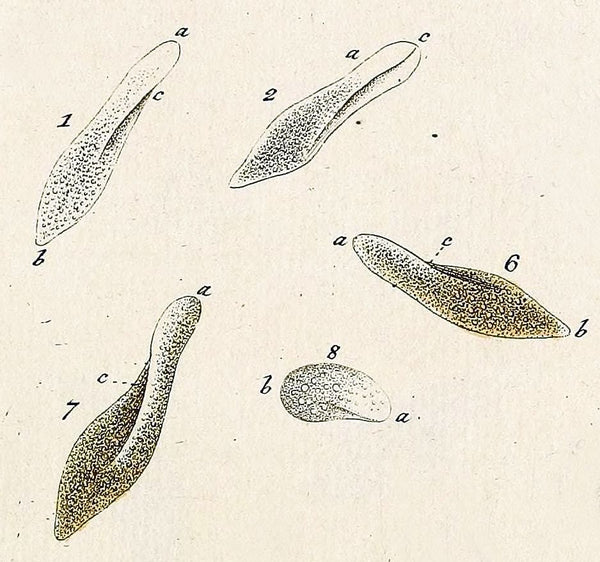- Continue Shopping
- Your Cart is Empty
Can you see clearly now?
We've had a lot of discussions over the past couple of years about the visual tint and appearance of the water in our aquariums. We've had some discussions about clarity, too. I wanted to return to the "clarity" issue again today, because there are some aspects of "clarity" that I think are sort of unique to the botanical-style blackwater/brackish aquarium.
One of the things you might notice right from the start is that botanical-laden aquariums seem to have an initial "haze" that is slow to clear. Now, part of this is no doubt due to the breakdown of the leaves, pods, etc. that we use: Surface dirt, lignin, and other compounds, bound up in the tissues of the botanicals, released into the water upon the initial submergence of these materials. And the fact that many of us tend to not use a lot of chemical filtration media in our tanks might have some impact on that, too.
Another reason for this haziness could be a burst of microorganism/bacterial growth, which impacts the visual clarity as populations multiply rapidly in the "fertile" environment of a botanical system, with its wealth of organic materials supplied by the decomposing matter upon which these life forms feed.

And then there is the idea of "infusoria."One only need reflect on the classic "infusoria" cultures which every fish breeder can recall from his/her experiences- they're really cloudy! Remember, infusoria is a collective term for aquatic organisms like euglenoids, unicellular algae, ciliates, protozoa, etc.

Now, I have placed a few drops of tank water under a microscope early in the life of several botanical-style tanks, and I did see quite a bit of microorganisms swimming around in there. Of course, I am not a microbiologist, and for me to make any conclusive statements about "density" or "diversity" of the life forms I saw swimming around in my samples is a bit too amateurish! That being said, in most of these samples, I saw a lot of "some sort" of life forms swimming around in the water!

Generally, I've found that the sort of "cloudiness" will typically clear after a week or two, as the "tug of war" between bacteria and "infusoria" achieves a sort of "equilibrium."
At this point, I should mention that you could intervene in this if you wanted to...Performing larger water exchanges, employing chemical/very fine mechanical filtration media, etc. Personally, I have learned over the years NOT to let this stuff phase me. I suppose I'm so deep in my own "mindset" about letting nature do its thing, that I don't do much to combat it...
Once this initial "microbial haze phase" passes, there are other aspects to the water clarity which will continue to emerge. And I think that these aspects are similar to what we observe in nature.
For example, I've noticed that in many of my aquariums, particularly those with certain types of wood (like mangrove, newer Mopani, etc.), you'll get more of this "patina" to the water. Again, I'm in the realm of speculation here, but I can't help but wonder if certain wood and botanical materials/leaves have a greater content of organic materials (or more readily release these materials into the water because of their structure), lignin, tannins, etc.
One of my friends calls this "flavor", and his moniker makes sense, when you think about it!
And I think that this is a really interesting phenomenon, which is distinctive to our botanical-stye blackwater/brackish aquariums. To accept it is a choice, and it definitely requires the adoption of a mindset shift to appreciate that this is very similar to what we see in many of the natural aquatic systems that we attempt to replicate.

We are always of the opinion that an aquarium is NOT an open, natural system, and that there are fundamental differences between the two. However, to see some of the processes, aesthetics, and what we call "functional analogies" (i.e.; the way materials break down, re-distribute within the tank, and how the aesthetics and water chemistry are affected by water exchanges, etc.) take place in our aquariums, we can't help but think that we're "on to something" here.
So, yeah, our aquariums may NOT have the "crystal-clear", colorless water which many hobbyists envision when they think of what an aquarium "should" look like. Yet, with the continued, evolving work which our community is doing, we'll continue to discuss/analyze/debate the merits of such clarity profiles in our systems.
With your observations, experiments, and ideas continuing to garner attention from our global "tint community", we're really excited to see how the body of knowledge we're accumulating will add to our understanding of this awesome niche in the aquarium hobby!
Stay bold. Stay open-minded. Stay curious. Stay creative. Stay excited...
And Stay Wet.
Scott Fellman
Tannin Aquatics













Scott Fellman
Author